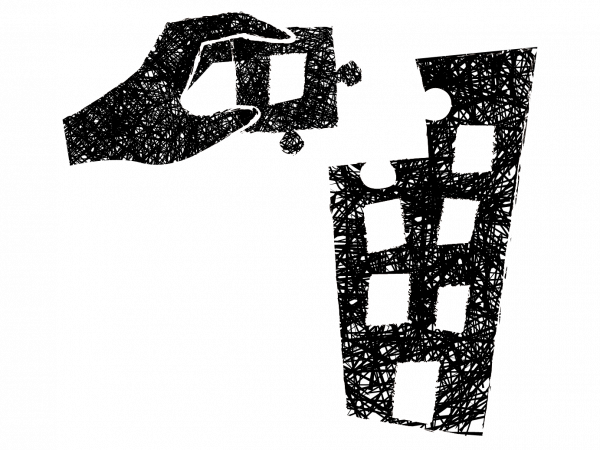- Home
- EN
- Our impact
- ProspeKtive
- How "user experience" thinking could lead to the individualized financialization of the workplace

How "user experience" thinking could lead to the individualized financialization of the workplace
September 2023
Expert
Thinking of the working environment in terms of user experience (UX) can lead to certain excesses. This approach tends to individualize the measurement of workplace use. What's more, it transforms the assessment of their performance by focusing on flow. Finally, making individual experience more fluid carries the risk of financializing it, particularly in the case of "global cost" management strategies. Taken to extremes, these strategies enable real estate to evolve from a cost center to a profit center, by inviting employees to pay for the use of the workplace through their experience.
In our experience-based society, UX is everywhere, including in the work environment. These are conceived as omni-channel journeys integrating space, digital and behaviors (or the 3Bs - Bricks, Bytes, Behaviors - of the activity-based environment). Work environment journeys are experienced by personae. They may start as soon as you get out of bed with an application, continue in the office on days when you're present, and end relatively late in the day, after a sports class, for example. Each persona represents an archetypal user. Everything is designed so that each person can enjoy a tailor-made experience, thanks to use cases adapted to their needs and desires. This UX approach to the working environment places the individual at the heart of the design, sometimes at the risk of the collective.
While many projects have a managerial focus, the UX method above all produces individualizing experiences: how do you encourage expression in a creativity room? How can we optimize waiting time in the canteen? UX is first and foremost a response to the needs and expectations of individuals, whether in terms of age groups, generations, status, origins, modes of transport, gender, age, sexual orientation, visible or invisible disabilities or cognitive diversity. Use cases simplify the individual's interaction with a solution to a specific problem. Their purpose is to make life easier, rather than to rethink lifestyles.
Beyond the results induced by the method, UX modifies the evaluation of the work environment. A good environment is measured by satisfaction percentages and usage rates. These two data are individualized: we measure what the individual thinks and what the individual does. The more UX-oriented the approach, the more precise and individualized the data required. This finesse is necessary to be able to understand what different users are thinking and doing. So it's hardly surprising that UX methods often come up against the limits of data privacy regulations. The question of privacy is becoming ever more pressing as actions are increasingly targeted to achieve desired goals.
Whatever they may say, these objectives are primarily aimed at optimization, because that's precisely what they measure: how can we do less with better? Once again, an individualized approach is the key. In some of the most extreme environments, regulation by quotas is put in place. Everyone can (and must) come xx days a week, no more and no less, within the limits of available stocks (number of places x number of reference periods). These extreme cases illustrate the thinking behind the UX approach: generate and manage flows (paths), reduce friction and under-use (moments and use cases), and do so for everyone (personae).
Within organizations, the fluidity of the individual experience is changing traditional indicators. Whereas for a long time, real-estate master plans were based on workstations per surface area, today they are based on staff per surface area. Those who are most advanced in the UX of the working environment think in terms of effective uses per surface area. Ironically, indicators are now often disconnected from the quality of the space - which is often linked to its density - and even, in some cases, from the users, focusing solely on frequency of use.
At the same time, the emergence of the coworking market has transformed the financial values to be optimized. To compare the performance of a coworking facility with that of a "conventional" work environment, a "full cost" approach is needed. This means taking into account all the costs involved in running the space (cleaning, maintenance, upgrades, etc.), as well as the services and events provided. The approach is no longer confined to real estate, but is becoming transverse, integrating budgets from IT, digital, communication, human resources and social partners.
While the coworking market is transforming financial evaluation, the proliferation of simultaneous teleworking has also increased the individualization of the approach. Although there are agreements in place, in France telecommuting is applied on a case-by-case basis. The law imposes the principle of double voluntary participation. This multiplication of possibilities and its variability over time increases the need to transform workplaces into flow centers optimized by individual data. It also reinforces the need for interaction with services and events, which must create attractiveness (and therefore flow). As a result, the most advanced organizations think of their work experiences in terms of networks of animated places, in order to adapt to the multiplicity of user experiences. In concrete terms, this translates into the coexistence of different models: proprietary sites, coworking sites, potential coworking spaces.
In this complex environment, organizations are seeking to regain control over individuals and usage. This can be seen, for example, in the budgets set aside for local management (budgets which are integrated into the work environment). In one case, each manager is allocated 100 (e) per year per employee to animate his or her team. In concrete terms, this means organizing small events (meals, aperitifs, outdoor activities). While the initiative is commendable, it also demonstrates a desire to control costs, since at the same time, expense accounts are controlled much more drastically and individualized (since everyone is entitled to their own time). Another example is the "coworking credit": in another case, all employees have a card giving them access to days in coworking spaces per month, in exchange for closing the main workplace. In the same vein, meal vouchers are a benefit for employees which, among other things, enable companies to legally reduce their catering space and services. If we look at these three cases optimistically, we can consider them as progress. At the same time, they make it possible to optimize and better control usage flows. At the same time, these approaches are making the working environment more individual and financially rewarding.
At the same time, some employees are beginning to complain that coming to work is starting to cost money. First, there's the time and energy spent on transport. Then, once on site, the employee becomes a consumer. He will reserve space, which for the moment is not quantified except for some coworking spaces. They will also have lunch with their colleagues. This rare moment tends to be more festive, with a certain social pressure to participate. Out with the bag lunch, in with the restaurant. At the same time, he may lose his telecommuting allowance - whereas he often doesn't lose his luncheon voucher when telecommuting. And in some cases, this is just the beginning: the transformation of the work environment into a flow center facilitates its monetization. For example, an employee's morning coffee may have been donated by his or her manager, using his or her entertainment budget to create a convivial moment before the team meeting. Or the employee may prefer to work from an informal space - and why not in one of those spaces taken over by the big coffee brands - sipping his favorite Latte recipe, paid for with his personal credit card.
The circle is complete. Designing the experience individualizes it. Individualization leads to services. In a logic of extreme flow optimization, services turn the space from a "cost center" into a "profit center". Some companies are already multiplying the number of corpoworking spaces they offer, in order to increase their attractiveness, but also with the expectation that these services and areas will be self-financing through user consumption (by employees and/or external users). So it's all a question of vision: to what extent is the working environment an optimizable flow or a place designed to be lived in?
Release date: September 2023



